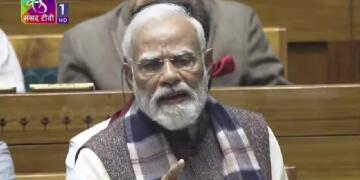In a major shift in Chhattisgarh’s long-standing battle with Naxal insurgency, the Ministry of Home Affairs has officially removed Bastar and Kondagaon from the list of districts affected by Left-Wing Extremism (LWE). This announcement signals what many see as a watershed moment in the effort to restore peace and state control in one of India’s most volatile regions.
These two districts—once deeply entrenched in Maoist influence—have now been reclassified as “districts of legacy and thrust,” a term suggesting that while they carry a history of conflict, their current focus is on growth and recovery.
Sources stated that the delisting is being seen as recognition of years of intense counter-insurgency operations. Security forces, including state police, the CRPF, and local units like the District Reserve Guard (DRG), have made substantial progress in neutralizing key Naxal operatives and disrupting their networks. Their efforts have steadily pushed Maoist presence deeper into the forests and away from population centers.
With a significant drop in violence, the state has been able to ramp up its development work. Projects such as road construction, rural electrification, and new schools and health centers are finally reaching areas that were, until recently, no-go zones. Basic services—once out of reach—are becoming available to people who had long been caught in the crossfire.
Despite the success in Bastar and Kondagaon, the wider Bastar region still includes hotspots like Sukma, Bijapur, Narayanpur, and Kanker where Maoist activity continues. Officials stress that while this reclassification is encouraging, it doesn’t mean the fight is over. Targeted interventions and sustained security presence are still necessary in these pockets.
Pushback Against Naxals
The government’s decision comes shortly after a major operation in Narayanpur earlier this year, where security forces killed 28 Naxals, including Basavaraju, the Maoist group’s elusive general secretary. The mission, which involved joint coordination between the DRG, Border Security Force, and local police, was one of the most high-impact offensives in recent years.
With a strong support from Prime Minister Narendra Modi and Union Home Minister Amit Shah, the security forces have been able to make the operations against Maoists a resounding success. Chhattisgarh Chief Minister Vishnu Deo Sai lauded the bravery of the personnel involved, declaring the operation a “historic breakthrough” and reaffirming the state’s goal to make all of Bastar Maoist-free by March 2026.
A New Chapter for Bastar
The removal of Bastar and Kondagaon from the LWE list reflects a broader shift in the region’s narrative—from one of violence and neglect to one of hope and rebuilding. It underscores the effectiveness of combining security operations with long-term development—a model that could offer valuable lessons for other insurgency-affected regions across India.
As Chhattisgarh moves forward, the challenge will be to ensure that peace holds. Sustaining these gains will require not just boots on the ground, but continuous investments in education, employment, and governance that reach the last mile.
This may be the beginning of the end for Naxalism in these parts, but the work of healing and rebuilding lives is only just getting started.




























